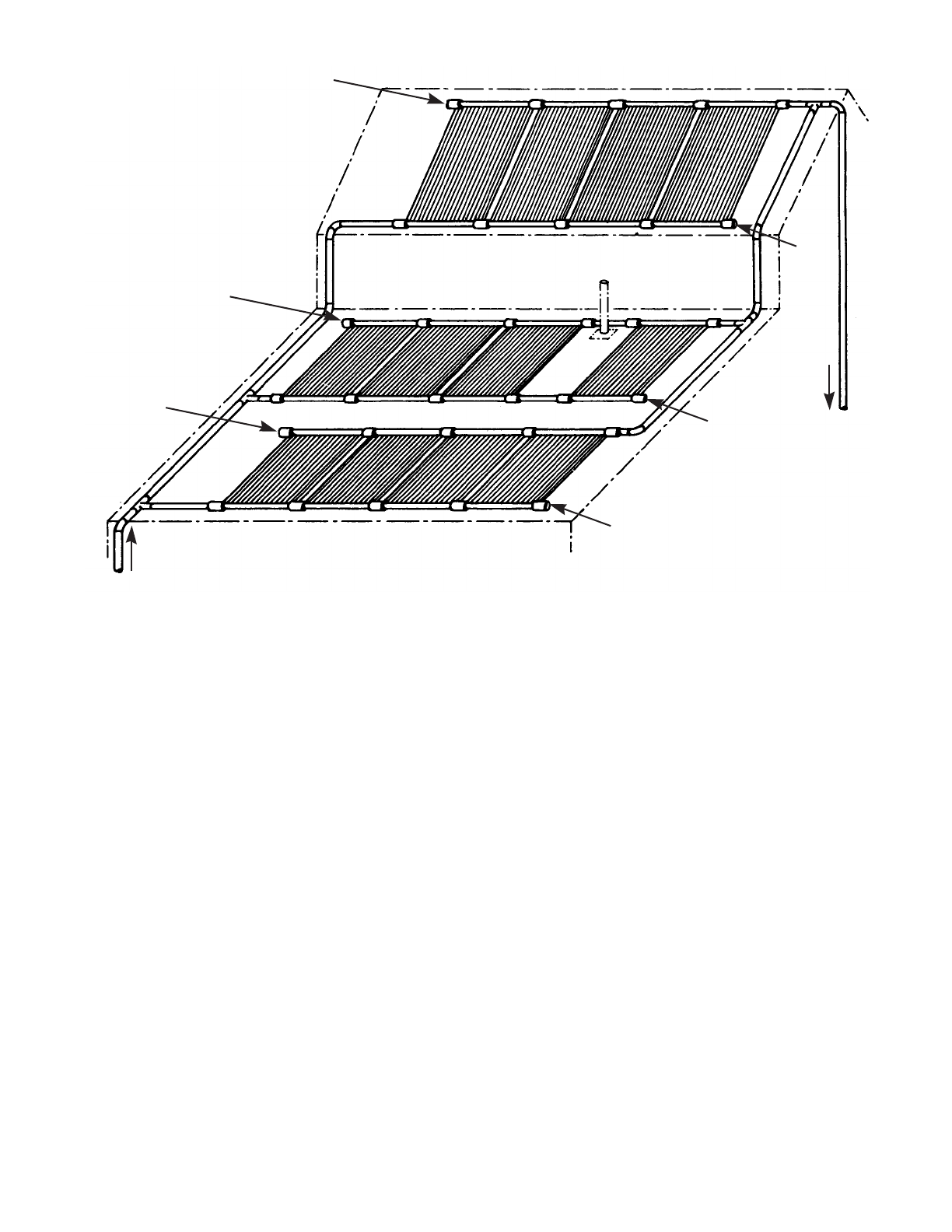
VACUUM RELIEF
VALVE
FEED
OUTLET
END
CAP
END
CAP
END
CAP
VACUUM RELIEF
VALVE
VACUUM RELIEF
VALVE
10
Figure 12
Manual Control of System
To test collector operation, follow either the flow-rate or
temperature-rise procedure. Divert water through the
collectors. Turn on the pump and either observe flow rate
or temperature rise. The flow rate or temperature rise
would be the same as that specified in the “System Start-
Up and Test’ section. If it is not, then check for the indi-
cated probable causes and make necessary corrections.
Flow Rate Test Method
The preferred system test method is flow rate. This is also
the easiest and quickest method. To check flow rate, install
a flow meter in the inlet line to the collector collectors (fol-
low installation instructions provided with the flowmeter).
Temperature Rise Test Method
An alternate test method is temperature rise. To prepare
the system for testing, obtain two accurate thermome-
ters. Aquatherm Industries dial thermometers (Part
#60054-2) are excellent for this application. One of these
thermometers is installed in the outlet line from the col-
lectors as shown in Figure 10. The other is used to check
the temperature of the pool water, to compare it with that
of the water leaving the solar collectors. Before installing
the thermometer in the outlet line, immerse both ther-
mometers in the pool water for several minutes to com-
pare the temperature readings. If they are not identical,
make a notation of the difference and add or subtract (as
appropriate) this difference to or from the reading taken
while you are testing. This is necessary in order to pro-
vide an accurate indication of the temperature rise of the
water passing through the solar collectors.
Turn the pump on and move the flow switch to the “COLL”
position. Observe valve action...it should divert water
through the collectors. After flow through the collectors
has continued for a least fifteen minutes, compare the pool
water temperature with the temperature of the water flow-
ing through the outlet line. On an average sunny day, with
the air temperature approximately 70
0
F (21
0
C) the water
leaving the collectors should be 1 to 7
0
F (1 to 4
0
C) higher
than that in the pool. If the water rise is greater than this,
insufficient water is flowing through the collectors. This
may be caused by a clogged filter, undersized piping, to
many elbows in the piping or an inadequate pump. It is
important that the temperature rise through the col-
lectors be kept as low as possible in order to deliver
the maximum amount of heat to the pool.
Vacuum Relief Valve Test
When the solar system is first turned on, air in the col-
lectors will be expelled into the pool and bubbles will
appear. The appearance of bubbles in the pool should
stop after a few minutes. If, after a few minutes, bubbles
continue to be discharged at the return to the pool,
